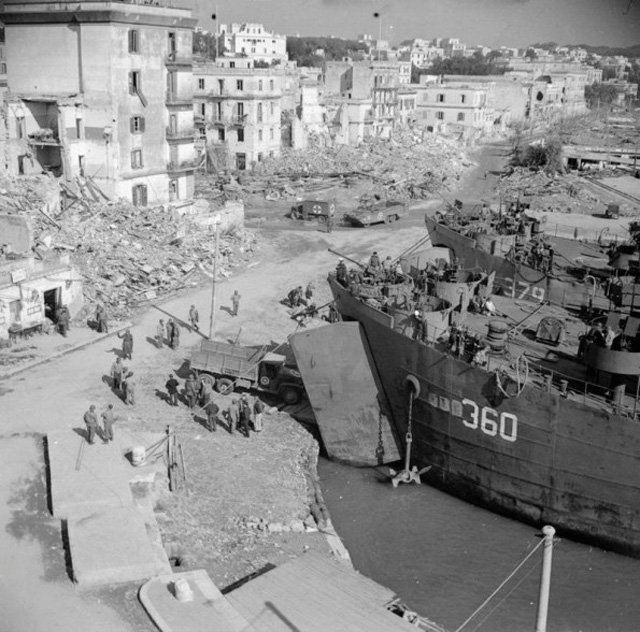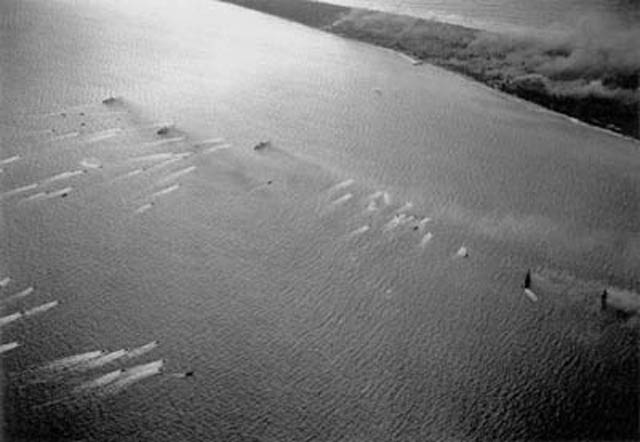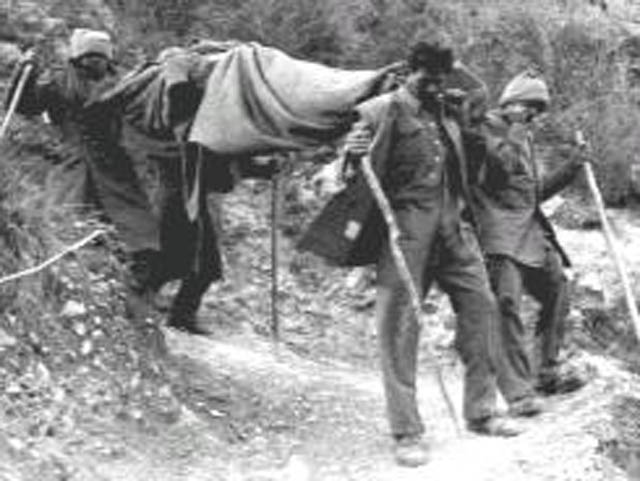Air Operations, Bismarcks
- A strike force composed of 23 AirSols TBFs, 48 SBDs, and 68 fighters is intercepted over the Rabaul area by fewer than 50 Japanese fighters. The light bombers attack the Lakunai airfield at Rabaul, 12 minutes later, 20 XIII Bomber Command B-24s, escorted by 35 AirSols fighters, attack Rabaul's Lakunai and Tobera airfields.
- A VF-17 F4U downs an A6M2-N 'Rufe' fighter-bomber float plane and 2 A6M Zeros over Cape Siar, New Ireland, at 0945 hours. VF-17 F4Us down 13 Japanese fighters over the Rabaul area between 1010 and 1025. VF-38 F6Fs down 4 Zeros over the Rabaul area between 1025 and 1030 hours. A VMTB-143 TBF crew downs 1 Zero over the Lakunai airfield at 1030 hours. 1 F4U is lost in the day's action.
- For all practical purposes, these are the last victories of the Rabaul air campaign. During the afternoon, all serviceable Japanese aircraft based around Rabaul are withdrawn from the region via New Ireland and the Truk Atoll. 30 damaged fighters and a handful of reconnaissance and utility aircraft are left behind.
- 12 V Bomber Command B-25s attack shipping near New Ireland and 7 A-20s attack shipping at Kavieng.
Air Operations, Carolines
VII Bomber Command attack Kusaie and Ponape islands.
[Air Operations, CBI
BURMA- Several 490th Medium Bomb Squadron B-25s and more than 60 10th Air Force P-51s and A-36s attack a wide array of targets, particularly dumps and rail lines, throughout Burma.
- 14th Air Force B-24s, B-25s, and P-40s mount intensive sweeps between Formosa and the French Indochina coast.
Air Operations, Europe
RAF BOMBER COMMANDEvening Ops:
- 823 aircraft are sent to Leipzig. In this total are 561 Lancasters, 255 Halifaxes and 7 Mosquitos.
- Following the Berlin raid on the 16th Air Marshal Harris tries to schedule a follow up raid for the next 3 nights but bad weather prevents it. This night the main raid is to Leipzig. There are 2 diversions: a mine-laying operation to Kiel Bay and a Mosquito raid on Berlin. This is not a good raid for Bomber Command. The German controllers only sent part of their force to the Kiel mine-laying diversion. When the main bomber stream crosses the Dutch coast, they are met by the remaining German fighter force and those that had been sent north to Kiel hurry to return. As a result, the bombers are under attack all the way to the target. Further difficulties arise when the strong head winds that are predicted are not present. As a result, many planes arrive at the target area ahead of schedule and take measures to delay their arrival. Many aircraft have to circle the target area awaiting the Pathfinders. As the bombing time approaches, collisions happen with planes coming from all directions with everyone trying to get in and get out as quickly as possible. Leipzig is cloud-covered and the Pathfinders have to use skymarking. The early part of the raid seems to be concentrated but becomes scattered. 969 people are killed and 51,380 people are bombed out of their homes. The targeted Messerschmitt plant survives the raid but is hammered the following day by US carpet bombing.
- 4 aircraft are lost in collisions and about 20 are lost to flak.
- 45 Stirlings and 4 Pathfinder Halifaxes lay mines in Kiel Bay, 16 Oboe Mosquitos bomb night-fighter airfields in Holland, 15 Mosquitos make a diversionary raid to Berlin, there are 12 Serrate patrols, 3 Mosquitos are sent to Aachen and 3 more bomb flying-bomb sites in France.
- 1 Mosquito is lost on the Berlin raid.
- The Luftwaffe make their heaviest raid on London since May 1941.
ITALY:
- XII Bomber Command B-25s attack German Army troop concentrations north of the Anzio beachhead area.
- XII Air Support Command A-36s and P-40s mount more than 200 sorties against tactical targets along the Anzio battle lines.
- 52nd Fighter Group Spitfire pilots down 12 Bf-109s in a running fighte over central Italy between 1310 and 1355 hours. Other 12th Air Force fighter pilots down 6 other Luftwaffe fighters throughout the day.
Air Operations, Marshalls
- Following a light air and naval bombardment, US Army ground troops land on Eniwetok Island and advance slowly against unexpectedly determined opposition. Elements of the Marine Air Group 22 headquarters land with the landing force.
- 41st Medium Bomb Group B-25s attack the Wotje Atoll. 15th Fighter Group P-40 fighter-bombers attack the Mille Atoll. (After losing 10 B-25G gunships to ground fire and 7 to Japanese Navy fighters in slightly more than 200 low-level sorties since December 28, 1943, the 41st Group switches to medium-level attacks, of which this is the first. Losses will drop off.)
Air Operations, Solomons
A VMF(N)-531 PV crew downs an E13A 'Jake' reconnaissance float plane near the Green Islands at 2145 hours.
[Battle of the Atlantic
- British frigate HMS Spey is en route to join convoy ON-224 when a submarine is detected by asdic. The depth predictor with which the frigate was equipped determined the U-boat (U-386) to be about 350-ft. Depth charges are set accordingly and after the first pattern, the U-boat breaks surface and begins to fight returning gunfire. The U-boat then tries to escape on the surface when Spey closes and straddles the submarine with a shallow-set pattern causing the U-boat to sink stern first.
- The first German submarine to be fitted with 'Schnorkel' equipment, U-264 is sunk by the sloops Starling and Woodpecker.
|
|
Italy
In the US 5th Army's VI Corps area, a predawn enemy attack make slight penetration, but the British 1st Division manages to stem the German advance. The front becomes stable, with no further major effort planned by either side for some time. The German attack is suspended following a message from Gen Siegfried Westphal, Marshal Kesselring's Chief of Staff, at 1430 in which he admits that the firm resistance of the Allies, their superiority in the air and the intense bombardment from their ships will not allow the Germans to throw them back into the sea. German reserve strength has been sapped by the costly actions to clear the beachhead.
The fighting on the Gustav Line also dies down.
[Marshalls
ENIWETOK ATOLLThe 106th RCT, 27th Division, lands on the lagoon shore of Eniwetok Island, after a naval and air bombardment. Two battalions go ashore abreast, the 1st Battalion on the right, the 3rd Battalion on the left. Pushing through outposts, the assault forces reach the ocean side of the island. The 1st Battalion then pivots to the right to secure artillery sites in the southern part of the island. A strong enemy counterattack delays the southward attack. The 3rd Battalion, 22nd Marines, the reserve force, is committed to strengthen the 1st Battalion in the afternoon. The 3rd Battalion, which was to have conducted a holding action, is ordered to the north end of the island instead and at 1230 starts northward cautiously. Unexpectedly slow progress on Eniwetok forces the postponement of an attack on Parry Island, scheduled for this date.
The fighting on Engebi flares up again at dawn. The Japanese resist doggedly, moving from one position to another across a system of tunnels made from old gasoline tins. At 0955 another marine battalion lands and by systematically destroying the enemy's ingenious trench system, puts an end to Japanese resistance during the course of the morning. [Norway, Resistance
Norwegian resistance fighters sink a cargo ship carrying heavy water from the Ryukan hydroelectric plant. It was bound for German laboratories.
[Occupied France
The Resistance attacks Arsénal National, near Paris, crippling the production of light artillery.
[Pacific
- Near New Ireland, US Army aircraft sink the Japanese submarine chasers Nos. 22, 34, and 40.
- The US submarine Grayback (SS-208) sinks the Japanese army cargo shop Taikei Maru (4739t) southwest of Takao, Formosa, and then the army cargo ship Toshin Maru (1917t) which had come to the aid of the other.
- The US submarine Jack attacks a Japanese convoy in the South China Sea sinking the merchant tankers Kokuei Maru (5154t) and Nanei Maru (5019t), Nichirin Maru (5162t) and Ichiyo Maru (5106t).
Images from February 19, 1944
|
|
|
|



